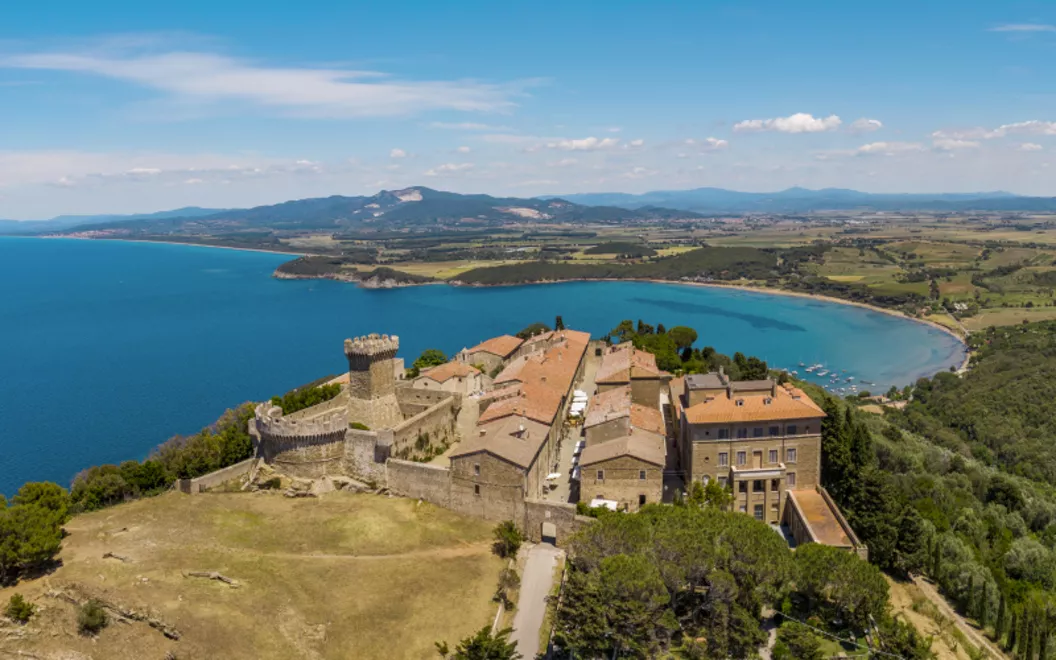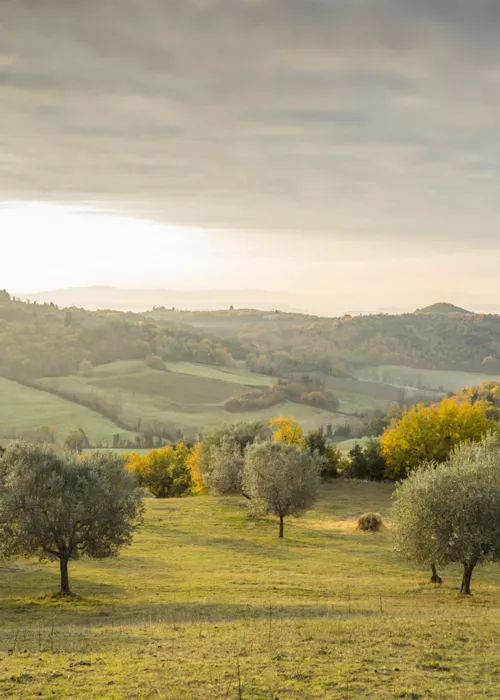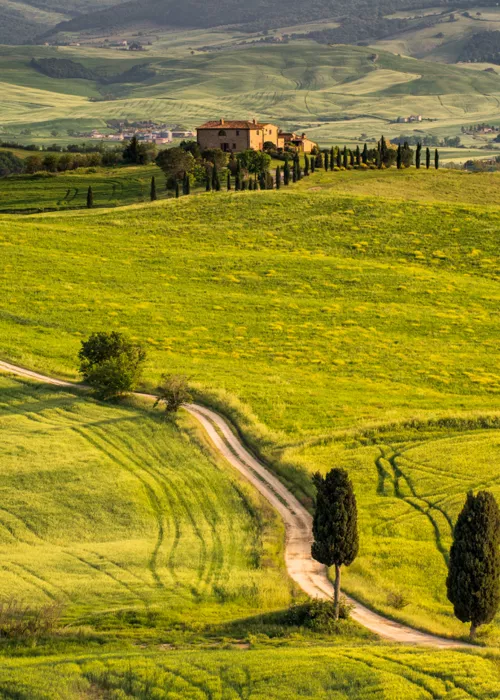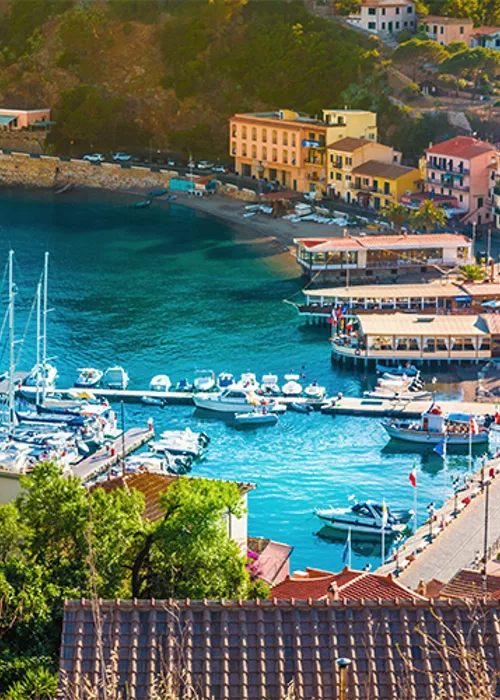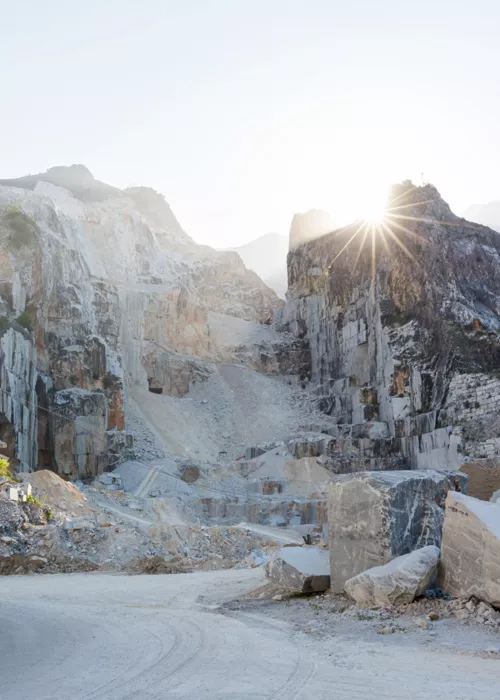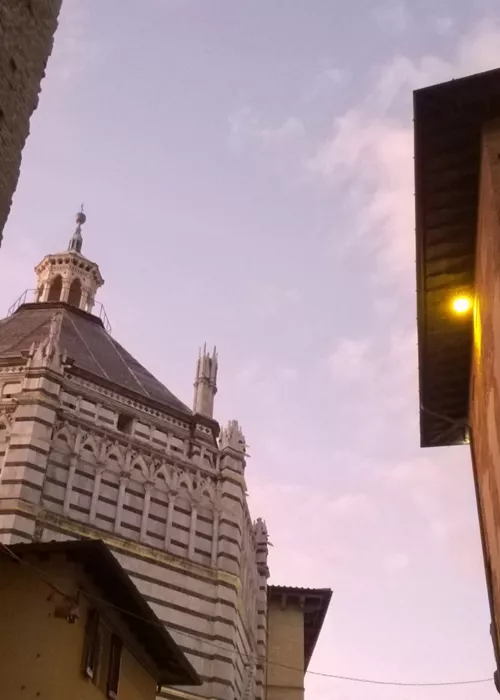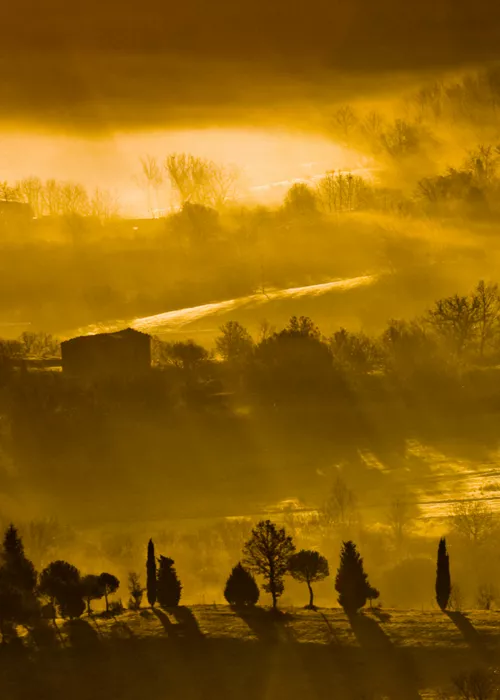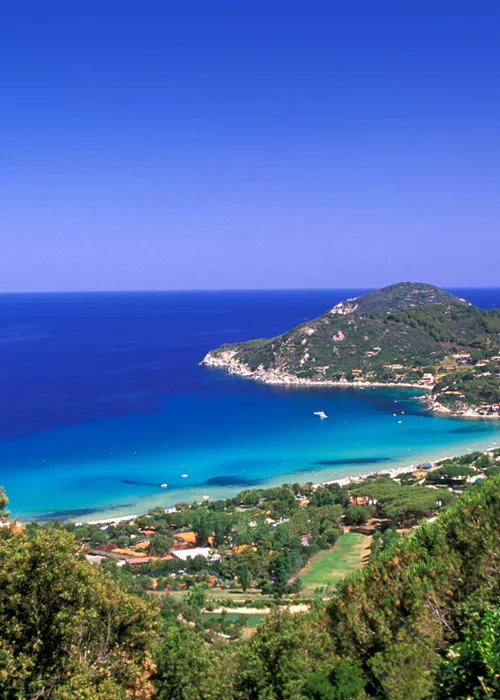Livorno

Livorno is a city rich in culture, worth visiting in any season, and the northern gateway to the Etruscan Coast. An ideal starting point for exploring the city is the nineteenth-century Piazza della Repubblica, which connects the ancient citadel to the more recent urban area. Proceeding northwest, you enter the Buontalenti Pentagon, by the Florentine architect who designed the fortified nucleus of Livorno, surrounded by the waters of the Royal Moat. The adjacent district of Venezia Nuova, where you can stroll along canals and bridges in an environment similar to that of Venice, arose between the 17th and 18th century. Walking through its characteristic streets, you come to the church of Santa Caterina, which contains a great wealth of coloured marbles and artistic treasures, including an altarpiece by Vasari.
At the end of the visit, head towards the nearby Old Fortress, and then continue south for a picturesque stroll along the harbour. Take the narrow Via dei Funaioli and then turn into Via S. Jacopo in Acquaviva: here you will find the elegant Villa Mimbelli, site of the G. Fattori Civic Museum, where you can admire works by the famous artist from Livorno and other important Macchiaioli painters. Leaving the museum, we recommend walking along Via Del Forte dei Cavalleggeri towards Piazza Mascagni, a large Art Nouveau-style scenic viewpoint from where you can enjoy a splendid view of the Tyrrhenian Sea. A visit to Livorno shouldn't end without having tasted the local cuisine. The main attractions are the seafood dishes, such as Livorno-style cod and cacciucco, a rich dish made with simple ingredients and best enjoyed with a glass of red wine. Also not to be missed is "5 and 5", a filled sandwich made with chickpea flatbread.
Bolgheri

Bolgheri can be reached in less than an hour from Livorno by taking the SS 1 south and then taking the SP39 at La California. Access to the small mediaeval village is via a long cypress-lined pathway. Bolgheri Castle welcomes visitors with a door at the base of a crenellated tower. The enchanted atmosphere continues in the tiny, well-maintained old town where, as you stroll through the narrow streets and small squares, you will come across a considerable number of wine bars, shops and restaurants. Giosuè Carducci spent his childhood in Bolgheri: a plaque indicates the house where he lived between 1838 and 1848, while in the square in front of Alberto sits a statue dedicated to Lucia Galleni, grandmother of the poet, of whom he was very fond. To her and the village are dedicated the nostalgic verses of "Davanti San Guido".
There are many reasons that attract visitors, certainly including the proximity to the Costa degli Etruschi, the beauty of the cypress avenue and the distinctly Tuscan landscapes surrounding the town. However, the identity of Bolgheri is found above all in the sun of the vineyards and in the darkness of the cellars. Thanks to a favourable microclimate and the skill of local producers, Bolgheri DOC wines are among the finest and most appreciated in the world. Although the area is known for the "Supertuscan" based on Sangiovese, Cabernet and Merlot, the whites and rosés, which represent the most traditional types of the area, should not be neglected. Local farms organise visits to cellars and estates, excellent opportunities to get to know the area better between tastings and walks in the countryside.
Suvereto

Suvereto is a small medieval town awarded the Orange Flag of the Italian Touring Club, set within the verdant Val di Cornia, a flat strip of land sheltered by plateaus, which marks the southern border of the province of Livorno. It is reached by following the Tyrrhenian coast southwards on the Aurelia state highway, and then taking the SR 398 at the Venturina exit. Before passing through the south gate, stop before it in Piazza Vittorio Veneto, where the parish church of San Giusto stands. The church was built between the 10th and 12th centuries and its fine Romanesque facade leads into a sober and recollected interior. Proceeding along cobbled streets and past stone walls, you come to the thirteenth-century Aldobrandesca Fortress, which protects the town from the top of a promontory. It houses a museum and from its external spaces you can enjoy delightful views of the woods and the countryside around the village. In addition to its interesting history, Suvereto has much to offer lovers of good food: the local wild boar is a delicacy and the main feature of a sumptuous winter food festival. The local DOGC wines, full-bodied reds made with Merlot, Cabernet Sauvignon and Sangiovese grapes, are the perfect accompaniment to the decisive flavours of Suveretto cuisine.
Populonia

Populonia dominates the Tyrrhenian Sea from the northern tip of the Piombino headland, the western end of the Val di Cornia where the coast seems to extend towards the Island of Elba.
Initially known as "Fufluna" or "Pupluna" in honour of the wine god Fufluns, Populonia was one of the 12 city-states that made up Etruria, the only one directly overlooking the sea. The headland where it stands marks the natural boundary between the Grosseto Maremma and the Etruscan Coast, so called because of the large number of archaeological sites scattered along the coastline. Populonia is a privileged place where historical evidence is layered, spanning a period from Etruscan times to the Middle Ages.
From Suvereto, we now head to Baratti, which can be quickly reached by travelling south on SR 398. Here you will have the opportunity to become acquainted with the Etruscans for the first time by visiting the Baratti and Populonia Archaeological Park which in this area holds two necropolises and the production quarters where iron from Elba was processed. The journey through time continues in the adjoining mediaeval village, gathered at the foot of the Rocca di Populonia, a well-preserved fortification built between the 14th and 15th centuries. The fortress can be visited and consists of thick walls and a tower from which there is a suggestive view of the Gulf of Baratti. Back in the present, we recommend trying the rustic and tasty local cuisine. The main dish of this part of the coastline is octopus piombinese style, seasoned with a simple tomato and onion sauce and served on toasted bread


